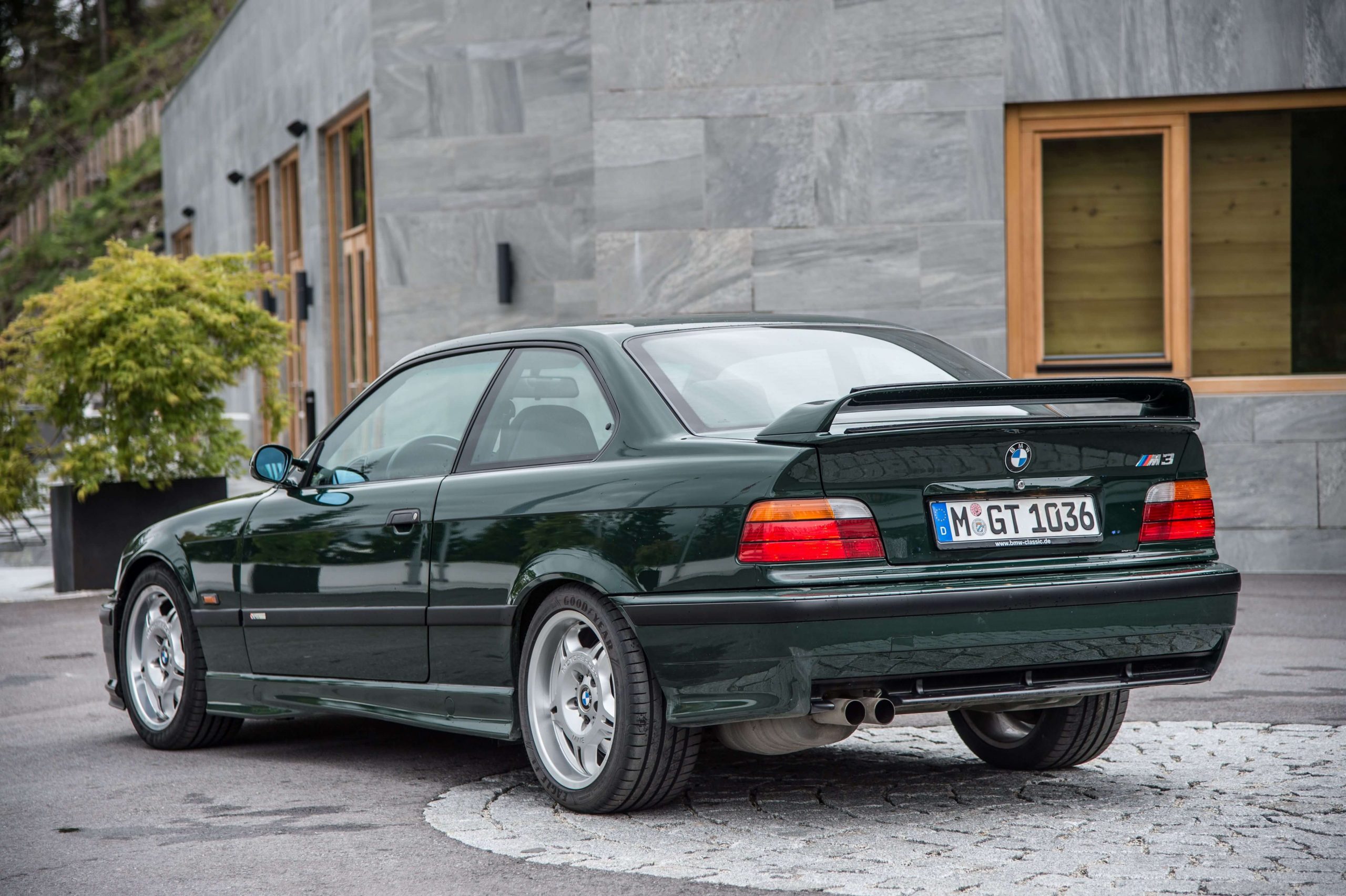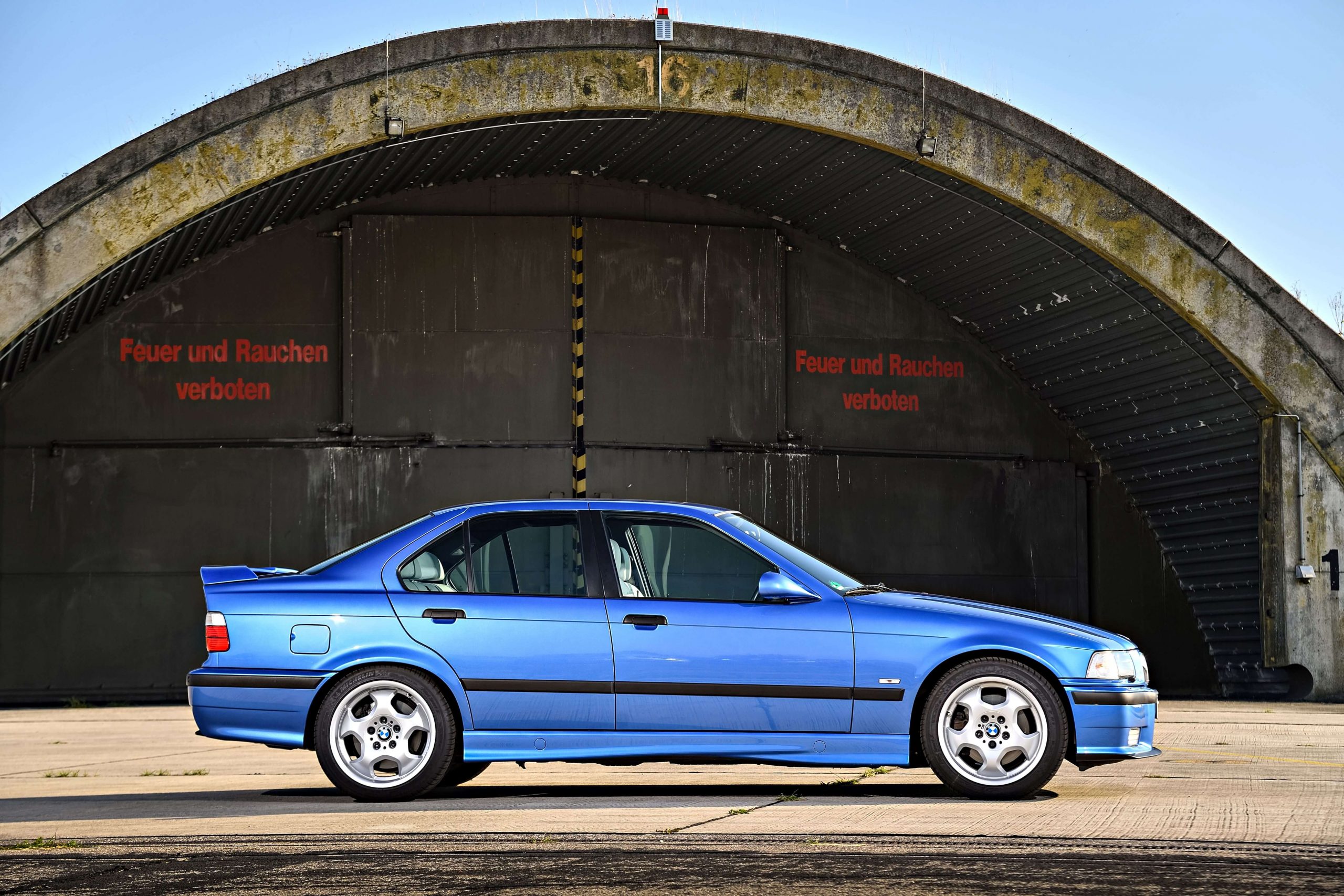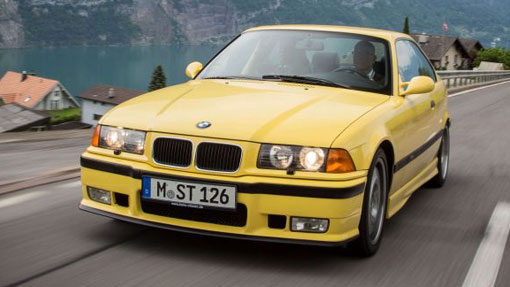BUYER’S GUIDE
BMW M3 (E36) Review
The moment the BMW M3 grew up and got sensible, the E36 is finally getting the recognition it deserves and makes a great modern classic
Engine
3.2-litre six-cylinder, petrol
Power
321PS (236kW) @ 7,400rpm
Torque
350Nm (258lb ft) @ 3,250rpm
Kerb weight
1,515kg
0-62mph
5.5 seconds
What Is It?
The arrival of the E36 BMW M3 in 1992 was a big emotional shift, signifying a decisive step away from the four-cylinder buzzbox vibe of the original and to a more mature and rounded vehicle closer in spirit to the M3 of today. The switch to a beefy straight-six was fundamental to this change in character, and was accompanied by new M3 variants like a four-door saloon and, later, the first appearance of the SMG automated manual gearbox. For some the increase in weight, technology and refinement were a step in the wrong direction and the E36 was for a long time underappreciated, though things are now coming full circle and its status as a true M car is now recognised and increasingly valued. For all the more grown-up vibe this is still, by modern standards, a raw and exciting car, with performance that’s perhaps easier to appreciate on modern roads than its newer relatives.
Corrosive Areas
Jacking points
Rear suspension mounts
Boot floor
Checklist
- E36 M3 development basically comprises two generations, starting with the 286PS (210kW) 3.0-litre original in 1992 and then the 321PS (236kW) 3.2-litre ‘Evo’ from 1995
- Facelift Evo models easily distinguishable by clear indicator lenses, though some earlier cars may have had these retrofitted
- Engines are known respectively as the S50B30 and S50B32 and share common features like individual throttle bodies; the 3.0-litre features VANOS variable valve timing on the intake while the 3.2 ‘double VANOS’ features it on exhaust side as well
- The E36 M3 launched with a five-speed manual transmission, upgraded to a six-speed manual for the Evo and then joined shortly after by the six-speed SMG automated manual gearbox
- Four-door saloon (or ‘limousine’ by BMW’s official designation) and a convertible version joined the range in 1994
- Limited editions include the left-hand drive only homologation M3 GT with its signature British Racing Green paint, bigger front splitter and rear spoiler, ‘aero’ mirrors, aluminium doors and carbon-trimmed interior; UK market M3 GT Individual adopted a similar look but not the uprated 296PS (218kW) power output or aluminium doors (in most cases); run-out edition of 50 M3 Imola Individuals sold in UK with GT bodykit, Imola Red paint and other detail upgrades
- Engines are generally considered tough when looked after properly so look for evidence of proper care; VANOS system can fail on 3.0 and 3.2 engines so check for a rattly top end, rough idling and low-rev lethargy
- Other mechanical weak spots include the drive sprocket for the oil pump (check the single nut holding it is secure) while the water pump is a known failure point; check all pipework and seals for leaks as well
- Manual transmissions can suffer abuse in hard-driven examples; SMG automated manual can throw up faults and adds complexity, commonly shown as an error light on the dash and refusal to select neutral; repairs can be costly
- Exhausts can crack and are expensive, likewise catalytic converters
- Check thoroughly for rust, especially around the jacking points, inner front wings, rear wheelarches, rear damper top mounts, rear trailing arm mounts, boot floor and upper windscreen edge
- Sloppy response can be attributed to worn engine mounts, suspension bushings and links; most are service parts but changing the rear trailing arm bushings is a specialist job
- Power steering racks can leak or fail; retrofit units from the Z3 a potential upgrade offering faster rack and improved response
How Does It Drive?
The character of the E36 M3 is, inevitably, very different from that of its more frantic predecessor given the extra cylinders, kilos and luxuries. But, looking back to where M started, it’s more like a junior M5 in its combination of understated muscularity, stirring performance and luxury. That engine is still pretty special, too, and at just shy of the magic 100PS per litre had better specific output than even the Italian exotica of the era. Which isn’t bad in a 3 Series.
A well-sorted example should combine a creamy, six-cylinder power delivery stretching all the way out to the 7,000rpm-plus redline with sharp, precise handling and that traditional BMW rear-driven balance. If less ‘on the doorhandles’ than its E30 predecessor it’s still fast and sharp enough to keep pace with anything of similar vintage, this blend of performance and refinement as attractive now as it was then. While most will prefer the manual the automated SMG seems an increasingly interesting curio for those willing to apply themselves to driving it properly, the need to lift between shifts offering a more involving two-pedal experience than the dual-clutches and autos in more recent M3s and M4s.
What’s Good?

Against the gaping grille and rippling bodywork of the latest M3 and M4 the E36 is a model of aesthetic restraint, with just enough about its stance and exterior details to set it apart from regular 3 Series of the era without shouting too loudly about it. That remains a very attractive combination, with the choice to go more lairy in some of the louder colours or play the stealthier card as taste dictates. The four-door, meanwhile, has much of the same appeal in a properly understated package. All are fast but the later 3.2-litre ‘Evo’ models offer a serious step up in performance with the increase in power to well over 300PS, while the combination of performance and luxury mean it’s a nice place to rack up the miles whether you’re letting rip or just on a cruise. Inclined on its side to reveal those individual throttle bodies and breathing out via a racy tubular manifold, the big straight-six looks as good under the bonnet as it sounds as well.
What’s Bad?
While appreciation is now growing and good examples are increasing in value the E36 has, like most M3s, lived through a period of relative affordability and, therefore, accessibility for owners more interested in short-term thrills than long-term upkeep. This particular ‘buyer beware’ vigilance when choosing one, with gaps in the service history, suspiciously low mileages, signs of bodged repairs and dodgy modifications all warning signs to pay heed to. Having waded through the many on sale with one or more of these red flags only then can you apply the more diligent checks for some of the known corrosion spots or mechanical weaknesses. Meanwhile, the SMG automated manual is best described as an acquired taste and adds potential for expensive failures and the convertible, while popular with some, is heavier, softer and arguably compromised as a proper performance car. The power roof can also be expensive to fix if it goes wrong.
Which Model To Choose?

While the saloon has a certain Q-car appeal most M fans will probably gravitate towards the coupe, given its purist credentials and more distinctive looks. Pre-facelift models with the 3.0-litre engine may be usefully cheaper to buy and still have the character and performance to put a smile on your face. Collectable versions like the European-market, homologation spec GT with its 296PS (218kW) version of the 3.0-litre engine, distinctive British Racing Green paint and high-level rear wing are prized, the UK-market GT Individual getting the look if not the really juicy mods while in fact even rarer. Also prized, the run-out Imola Individual will be much coveted by the true fans and priced accordingly. As a car to enjoy, though, an Evo with the more powerful 3.2-litre engine and manual transmission is probably the best of the bunch, and a safe place to have your money while you get out and enjoy a true BMW classic.
Specifications
Engine
3.2-litre six-cylinder, petrol
Power
321PS (236kW) @ 7,400rpm
Torque
350Nm (258lb ft) @ 3,250rpm
Transmission
Six-speed manual, rear-wheel drive
Kerb weight
1,515kg
0-62mph
5.5 seconds
Top speed
155mph
Production dates
1992-1999 (total production across all versions)
